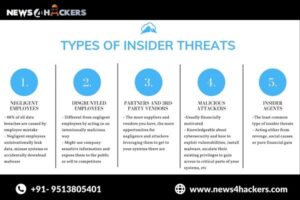What the Outlook for Email Security Appears in 2023?

How are email-based threats affecting the email security landscape as they get more refined?
Email has been a frequent source of cybersecurity concerns for more than ten years. Email-based risks have evolved over time to become more complex. The practice of malicious individuals using complex social engineering strategies to persuade the recipient to give essential details unintentionally has emerged from the notes that initially came from Nigerian princes asking for significant amounts of money to assist them back home. It won’t likely end there.
In the latest report, Email Security in 2023, the VIPRE Security Group provided valuable observations on the evolution of email-based attacks and how they may affect enterprises. The important conclusions from the study are summarized below, along with recommended actions that firms may take to safeguard their personnel and data.
Email Threats Are Getting More Hazardous
There are several methods that email can be used to undermine the security of a company, but phishing is by far the most common method. In a phishing attack, a person gets an email that appears to be from a trustworthy sender asking them to click a link, log into a system, or disclose information. The malicious party impersonating the sender of this email may sneakily acquire the recipient’s authentication information or trigger a malicious installation that infects the entire chain of systems. The malicious person now has access to the data they were after.
Nowadays, Phishing is one of the top five methods used to start data breaches today, based on the Verizon 2022 Data Breach Investigation Report. It’s a developing trend. Email phishing assaults accounted for 24% of spam emails in 2022, up from 11% in 2021.
However, it is not surprising that this tendency has grown, given that phishing just involves a modest amount of effort on the part of attackers and offers them a respectable rate of return.
There are several risk factors that have increased the frequency of phishing attempts, including the following:

- Insider Threats: Insider threats occur when unhappy or compromised personnel use their insider status to get entrance to certain resources. They may employ social engineering to ask for things from others through the use of their company email and their insider information.
- Domain compromise: Attackers may compromise a website or recently registered domain to produce communications and links that appear to be real.
- Phishing-as-a-Service: Phishing-as-a-Service has evolved as a paradigm that is regulating the shadow economy and facilitating the use of phishing and hacking services by criminal actors.
- QR code Spoofing: Due in significant measure to how familiar people became with them during the pandemic, scammers are starting to use QR codes in their email phishing schemes.
- Domain warming: It is a method by which somebody builds up a domain’s credibility so that its emails aren’t marked as spam. Once it begins to be blocked, malicious individuals stop using the domain and move on to the next.
What Can We Hope in 2023?
The VIPRE team included 3 forecasts for the state of email security this year in its study.
#1 There will be more attacks focused on remote work. While email is a primary method of contact for remote workers, the statistical likelihood of a successful phishing attack simply increases. A variety of collaborative apps, including Asana, Slack, and Teams, rely on email as a verification technique, which makes them vulnerable.
#2 The “as-a-Service” industry will continue to expand. Internet criminals are learning that they no longer require technical expertise to carry out their campaigns. They can now employ a group to complete it for them. The upside potential of this expanding market is risky. Therefore, businesses must be vigilant.
#3 There is a risk to small firms. Malicious actors are focusing on “easy” targets: small enterprises, as they choose a more adaptable and effective strategy. Smaller businesses are easier to hack into than larger ones because of the increased security measures used by major corporations. They become more useful to hackers as a result.
Although becoming aware of the threats is a crucial first step, enterprises must also be prepared to defend themselves against these actions.
What Businesses Can Do to Protect Their Own Interests?
Just as the dangerous email threat landscape has changed over the past ten years, email security has followed the same pace. Enterprises today have a wide range of alternatives when it pertains to enhancing their email security measures. These consist of the following:
- Putting in place a tiered email security plan that takes into account various phishing techniques and deters malicious actors from trying an attack.
- Investing in behaviorally-driven analytics will enable them to immediately spot any warning signs and take action in response to a behavioral abnormality before it has any significant effects.
- Secure data transmission to prevent sensitive information from being recorded in email responses. Encryption can be used to accomplish this.
- Implementing security measures tailored specifically for email that go beyond customary security measures, like dynamic crawl capabilities.
- Creating a thorough security posture, actively monitoring all files, processes, and network activities, and protecting all endpoints.
- Educating consumers to be more vigilant. When implementing new rules and regulations, it’s critical to gain employees’ support because education is a crucial component in creating a culture of security.
About The Author:
Yogesh Naager is a content marketer that specializes in the cybersecurity and B2B space. Besides writing for the News4Hackers blog, he’s also written for brands including CollegeDunia, Utsav Fashion, and NASSCOM. Naager entered the field of content in an unusual way. He began his career as an insurance sales executive, where he developed an interest in simplifying difficult concepts. He also combines this interest with a love of narrative, which makes him a good writer in the cybersecurity field. In the bottom line, he frequently writes for Craw Security.

Read More Articles Here :
WhatsApp International Calls Scam: The Messaging Giant Releases A Statement Announcing Improved AI Systems
Haryana Discovers ₹100 Crores Cyber Fraud, 66 People Arrested








